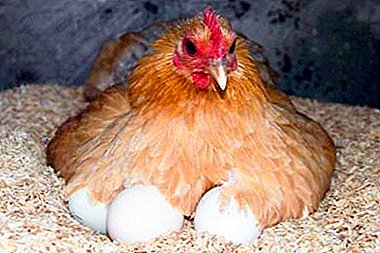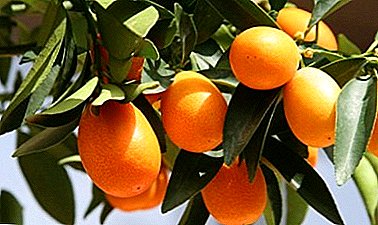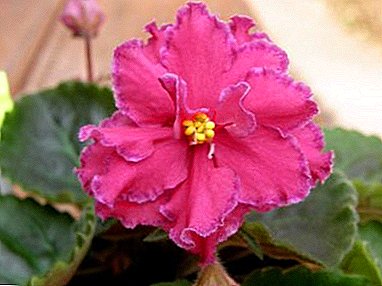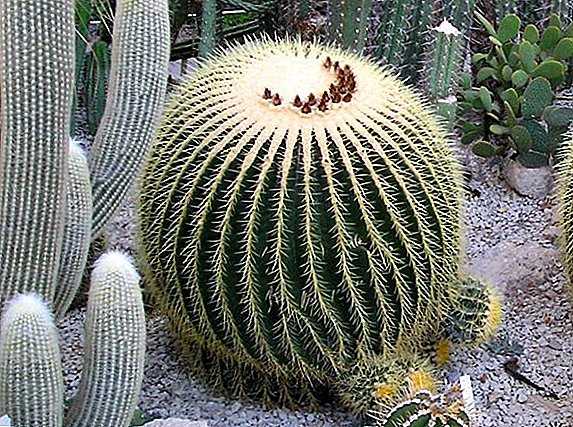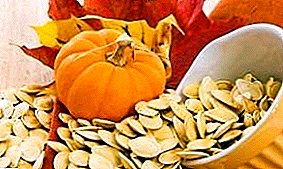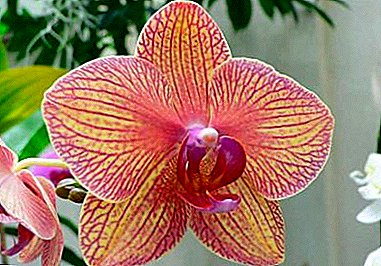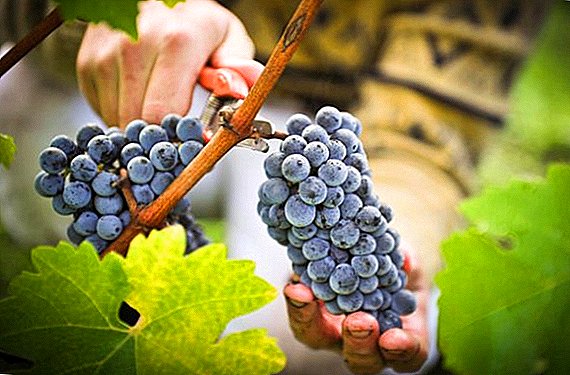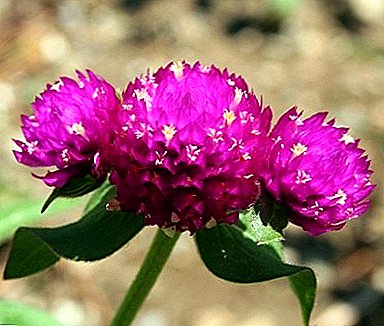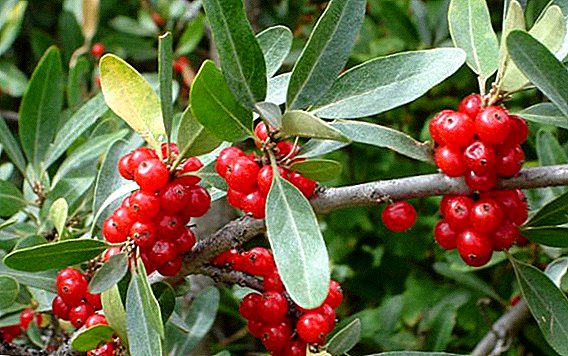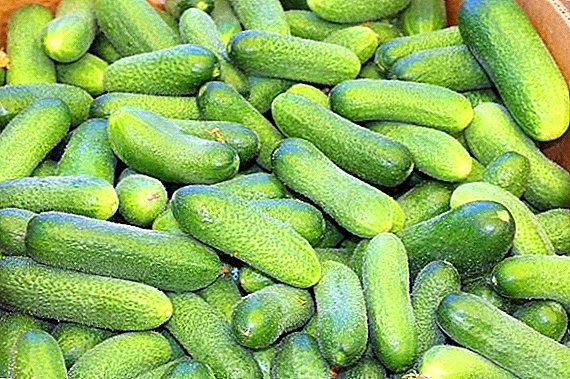 Lukhovitsky cucumbers are very valued by gardeners, because they have excellent taste, good appearance and are suitable for use both fresh and canning. Although these varieties are grown in special conditions, you can also try to do this at home. In the article we will consider how to organize the necessary conditions for a Lukhovitsky cucumber in order to get an excellent harvest, and also give a description of its most famous varieties.
Lukhovitsky cucumbers are very valued by gardeners, because they have excellent taste, good appearance and are suitable for use both fresh and canning. Although these varieties are grown in special conditions, you can also try to do this at home. In the article we will consider how to organize the necessary conditions for a Lukhovitsky cucumber in order to get an excellent harvest, and also give a description of its most famous varieties.
Description and best varieties
Lukhovitsky cucumbers got their name from the Lukhovitsky fishery, which is located near the Oka River and has unique climatic conditions, which positively affects the organoleptic properties of farmed products. Cucumbers are characterized by small size, high density, have characteristic pimples and crunch during
Check out the most common cucumber varieties: "Masha f1", "Competitor", "Zozulya", "German" and "Courage".
In the middle of the last century, Lukhivitsky cucumbers had a lot of varieties, but Today the most popular for cultivation are considered varieties:
- "Vyaznikovsky" - short-variegated variety with a length of cucumbers up to 11 cm and a weight of up to 130 g. The shape is elongate-ovate, greenish lumpy, does not have bitterness. Yield up to 3.5 kg per 1 square. m, resistant to diseases and temperature drops;

- "Murom" - resistant to powdery mildew and bacteriosis. Zelentsy reach lengths of 14 cm and weight up to 140 g, have an elongated ovoid shape, small-tubercular, without bitterness. The yield reaches 3.1 kg per 1 sq. Km. m;
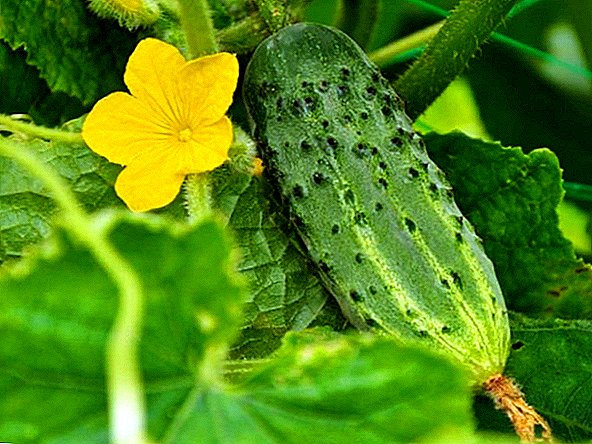
- "Mirinda" - medium-length variety, has cylindrical tuberous greens without bitterness, reaching 12 cm in length and weight of 110 g. The variety is resistant to cladosporia and is characterized by a fairly high yield per square meter. m accounted for 6.3 kg of green;
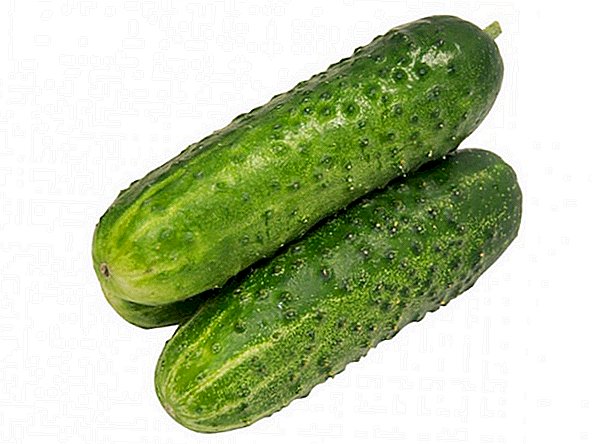
- "Libella" - srednepletistoy plant, which is characterized by abundant ovary. Cucumber cylindrical, small-tuberous, reach 12 cm in length and weigh up to 100 g, Productivity - up to 80 t / ha;
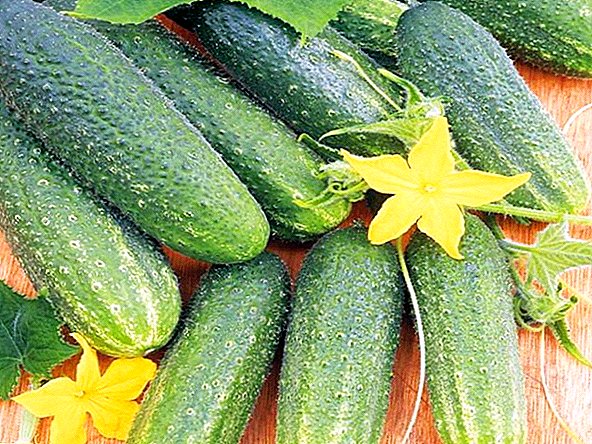
- "Elegant" - moderately variegated, resistant to olive blotch. Zelentsy ellipsoid, small-tuberous, reach a length of 13 cm and weight up to 140 g. The yield, depending on growing conditions, ranges from 5 to 7 kg per 1 sq. Km. m;

- "Solinas" - vigorous variety resistant to powdery mildew and tobacco mosaic. Zelentsy tuberculate, cylindrical with whitish tubercles, up to 9 cm in length and weighing up to 100 g. The yield is up to 100 t / ha;
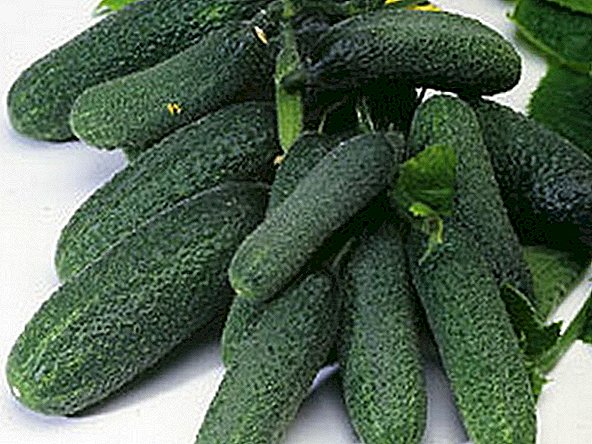
- "Adam" - A variety that has high-growth wickers is considered resistant to powdery mildew, cladosporia and cucumber mosaic. Cylindrical fine-tucked green fences reach 13 cm in length and weigh up to 95 g. The yield is about 10 kg per square meter. m
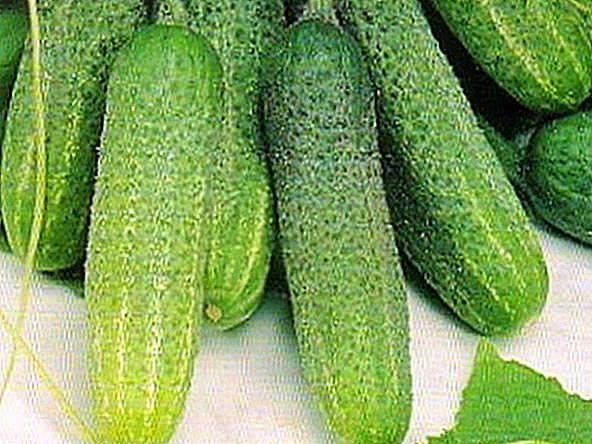
Did you know? Cucumber is considered one of the most ancient vegetables in the world - its age is about 6 thousand years.
Advantages and disadvantages
Advantages of Lukhovitsy cucumbers:
- small size and length;
- during the ripening period, all the greens are of the same size, which is a big plus for canning;
- can be grown in open ground and in the greenhouse;
- Zelentsy smooth and neat;
- high yield;
- fruits have excellent taste;
- ripen quite early;
- greenhouses do not have internal voids;
- fruits do not mumble;
- the flesh is crispy and juicy;
- have a long storage period;
- well tolerated transportation;
- almost all varieties are considered resistant to the most common diseases of cucumbers.

Planting rules Lukhovitsy cucumbers
In order for the growing process to take place without much hassle, it is necessary to consider the rules of planting Lukhovitsy cucumbers.
Lukhovitsy cucumbers are distinguished by the fact that they are grown in special climatic conditions that can be provided only in a certain area. They are suitable oily soil, high humidity and a long period without frost.
Cucumbers love good lighting, so you need to consider this factor when planting.
Also, planting cucumbers produced on well-fertilized soil, because this plant needs nutrients. To do this, before planting you can pour in the hole rotten manure or chicken droppings. 
Often used for growing greenhouses, where the easiest to organize the necessary conditions.
- It is necessary to place straw at the bottom of the greenhouse so that as it decays it provides the plants with the necessary heat.
- On top of the straw is poured a soil mixture consisting of peat, soil and humus.
- Seeds need to pre-soak;
- Make shallow holes at a distance of 30 cm from each other, plant two seeds in each well and cover it with soil a little.
- Growing temperature should not be below 18 degrees.
Did you know? There are amazing cucumbers flowers. The fruit of the plant can be yellow, white and even red.
 When growing cucumbers in the open ground, it is recommended to first grow the seedlings, because when sowing directly into the soil, the seeds may not tolerate temperature fluctuations. Sowing seeds for seedlings is necessary in greenhouses, adhering to the temperature regime for its normal development.
When growing cucumbers in the open ground, it is recommended to first grow the seedlings, because when sowing directly into the soil, the seeds may not tolerate temperature fluctuations. Sowing seeds for seedlings is necessary in greenhouses, adhering to the temperature regime for its normal development.Planting seedlings Lukhivitsky cucumbers is recommended to carry out in early June, when the air temperature warms up sufficiently and the possibility of frost will be excluded. For planting in open ground suitable plants that have already formed four true leaves.
Transplanting should be done carefully, so as not to injure the root system.
Planting should be carried out at a distance of at least 50 cm from each other in the wells, pre-watered with water.
Care features

Features of caring for Lukhovets cucumber varieties depend on the growing conditions - greenhouse or open ground.
In the open ground
Considering the fact that cucumbers are traditionally planted in Lukhovitsy, it is necessary to try to observe all the same conditions when planting in open ground.
Cucumber needs a fairly loose soil, because the root system is in the top layer of soil and requires good ventilation.
Important! Loosening the land on the bed with cucumbers is strictly prohibited, because the root system suffers from such a procedure, the plant weakens and may die.The best option to ensure the looseness of the earth - time to introduce organic matter into the soil and carry out mulching.

Cucumbers are rather moisture-loving plants, therefore it is necessary to pay special attention to watering. Watering is necessary regularly when the soil begins to dry out a bit, and prevent it from drying out. It is recommended to moisten the beds in the evening when the heat subsides a bit. It is necessary to increase watering during fruiting, so that the fruits have enough moisture to form high-quality cucumbers.
If before planting you poured manure into the hole, then the plant does not need further dressing. If organic application was not carried out, feed the plant with nitrogen fertilizers, phosphate and potash fertilizers. The best option would be ammofosk (10 g per 1 sq. M.).
For the viability and fruiting of cucumbers, feed them with nitrogen fertilizers: calcium nitrate, nitrophosphate, nitroammophos and Azofoskoy.
In the greenhouse
In the spring, the temperature in the greenhouse should be maintained at 25 ° C; if the temperature rises above, then it is necessary to ventilate it, or open the frame. Ensure that the temperature does not drop below zero at night. Additional insulation should be carried out if the temperature does not rise above 16 ° C. 
When the plants have grown a little and there are three true leaves, it is important to take care of the fertilizer. For this they recommend using "Sudarushka". For the first feeding, you need to take half of this norm and add a couple of tablespoons of manure. Follow the fertilizer recommendations on the package.
It is necessary to water the soil as the soil dries. When a greenhouse is equipped, it is imperative to install a special irrigation in order for it to occur evenly and gradually.
Important! In the spring, watering is recommended very rarely, and in summer watering is more frequent. Also, be sure to water the plants before fertilizing.For the normal development of the plant, the soil should always be hydrated, it should not be allowed to dry completely, but also too much moisture can not be too. Therefore, watch the top layer of soil when it begins to dry - water the plant with water at room temperature to ensure better absorption of water by the roots of the plant.
Harvesting
If the spring is early and warm, then the ripening of the first batch of cucumbers in the greenhouse occurs in early May. After planting the plant in open ground, after a month and a half, you can start harvesting cucumbers. For example, when planting cucumbers in early June, the first crop will be formed by mid-August. If the rules of plant care are observed, the harvest of the Lukhovitsy cucumbers will be sufficiently abundant and of high quality, but in one way or another depends on the characteristics of a particular variety.









